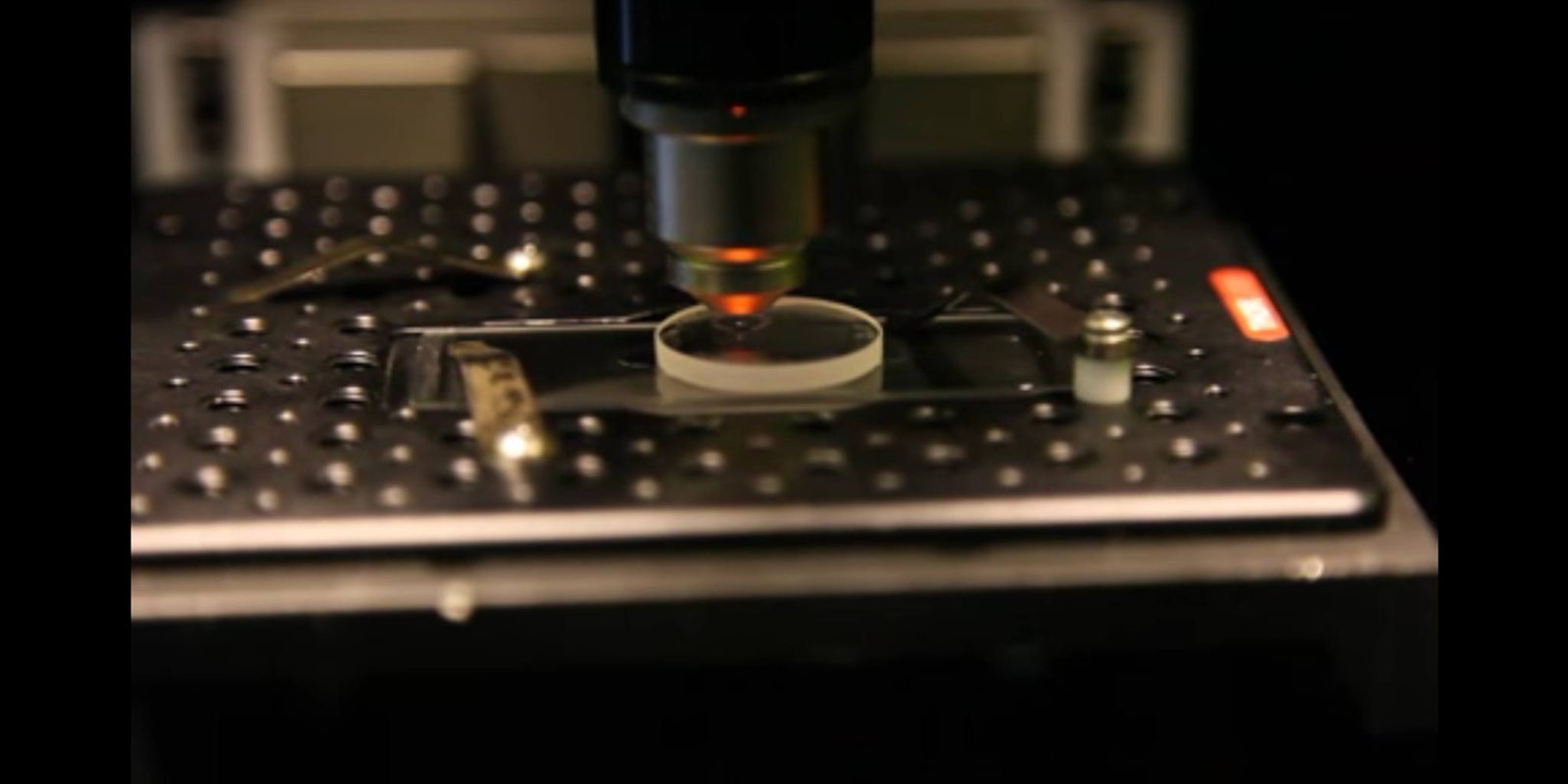Thanks to researchers at the University of South Hampton, your data can now be immortal. Scientists have discovered a digital data storage technique that can hold information for 13.8 billion years.
The process uses femtosecond lasers, which blasts a pulse of light every one-quadrillionth of a second. The ultra-fast laser is used to write the files in three layers of nanostructured dots spread apart by just five micrometers—one millionth of a meter.
Using the rapid-firing laser light pulses, the team behind the discovery found that they could write data onto fused quartz discs. The glass structures were deemed “Superman memory crystals,” named after the memory crystals that appear in the Superman films.
Encoding data in this way actually requires it to be done in five dimensions. It records the three-dimensional position of these nanostructures—accounting for width, height, and depth—plus two additional dimensions for the the size and orientation of the data.
The result of the process is data that can essentially live forever. Each disc can store up to 360 terabytes, maintains thermal stability up to 1,800 degrees Fahrenheit, and a lifespan of 13.8 billion years. It’s truly a permanent record—not like the one your teachers and principal threatened to record your misbehavior on.
The breakthrough marks the biggest leap in data storage yet. Magnetic tape storage—the kind you’d see in cassette tapes—lasts just 10 to 50 years before beginning to degrade, even under ideal circumstances. CDs, DVDs, and other forms of optical media hold data for between 40-100 years, but are especially susceptible to physical damage and “disc rot.” The U.S. National Archives and Records Administration suggests discs may become unreadable in as little as one year.
Hard disk drives utilize magnetic media, and data degradation sets in as the drive loses magnetic orientation. Most drives are much more likely to experience mechanical issues before the data leak sets in. According to a study by BackBlaze, year four is when mechanical errors become commonplace.
Solid state options like flash drives and SSD using electrical charges to store data, which can also be susceptible to losing information over time. Ten years is about the expected lifespan for flash storage, though constant rewriting of files can shorten that time. Solid state drives have been found to be no more reliable than hard disk drives in terms of failure rates.
Obviously, the five-dimensional “Superman memory crystals” blow all of the existing options out of the water when it comes to longterm data storage.
The team behind the breakthrough will present findings at the International Society for Optical Engineering Conference in San Francisco later this week, with the aim of finding industry partners to commercialize the product.
Once it hits the market, it will become incredibly important that you remember to clear your browser history because that will be an embarrassment that lasts forever.
H/T Gizmodo | Screengrab via Optoelectronics Research Centre/YouTube


